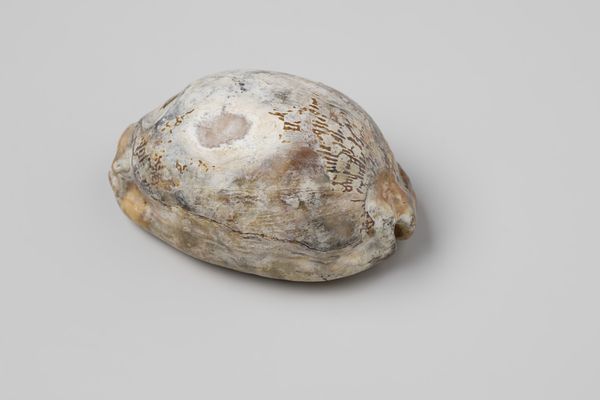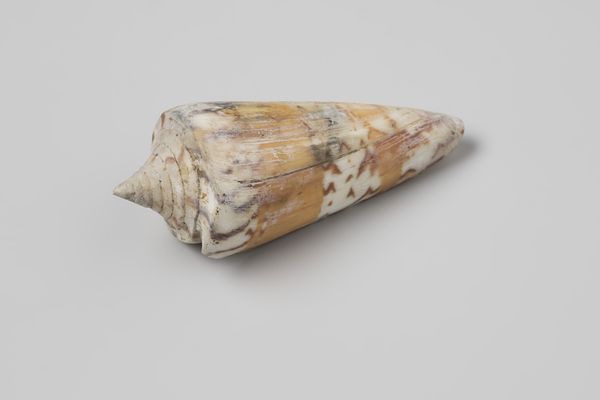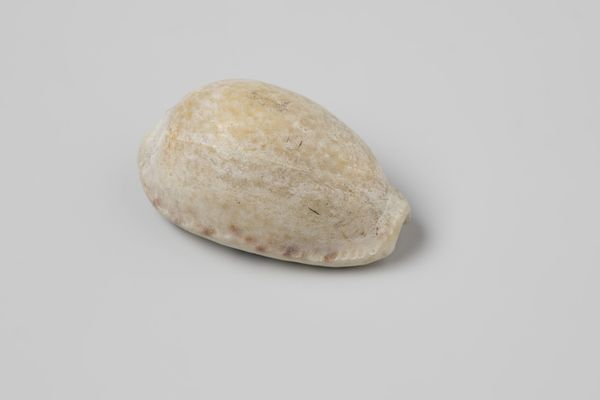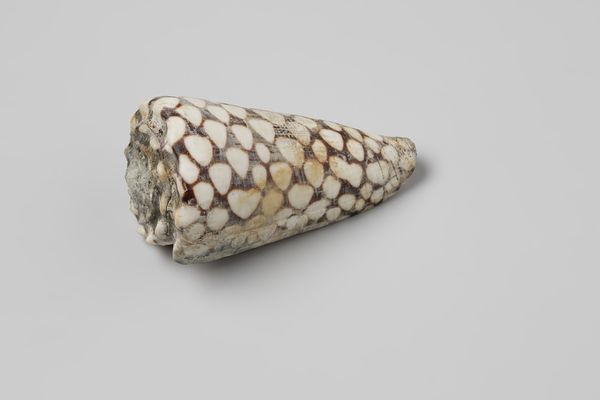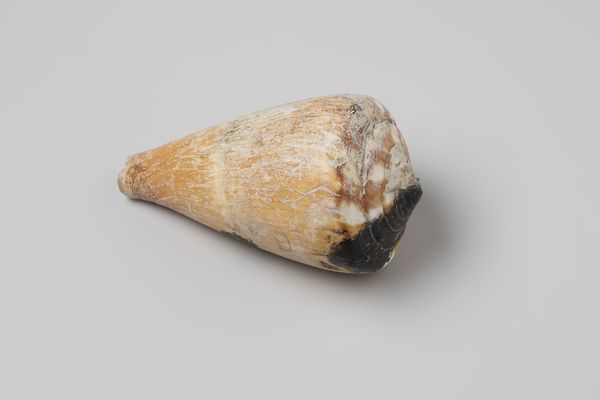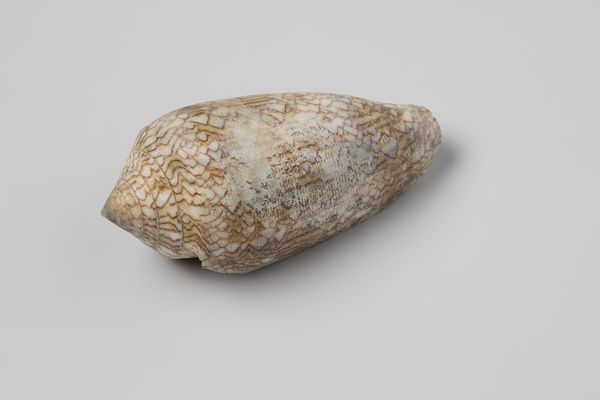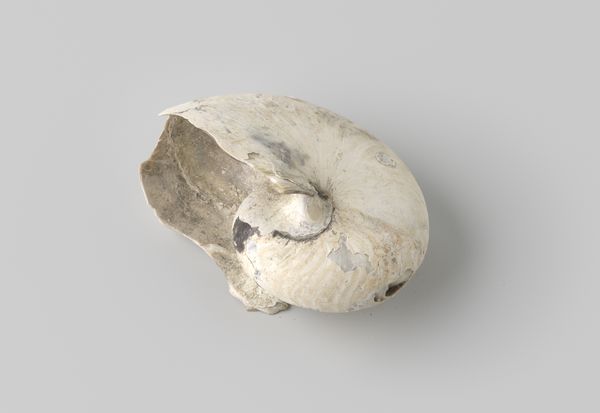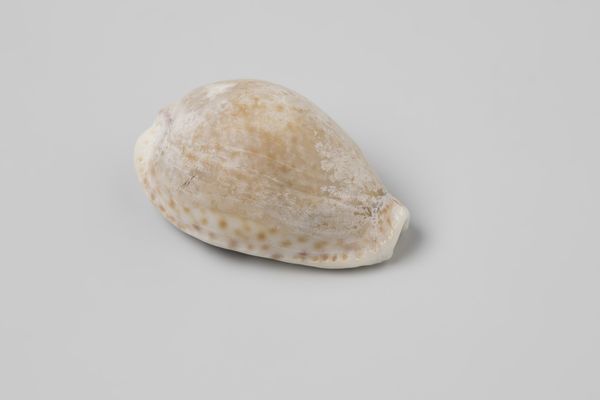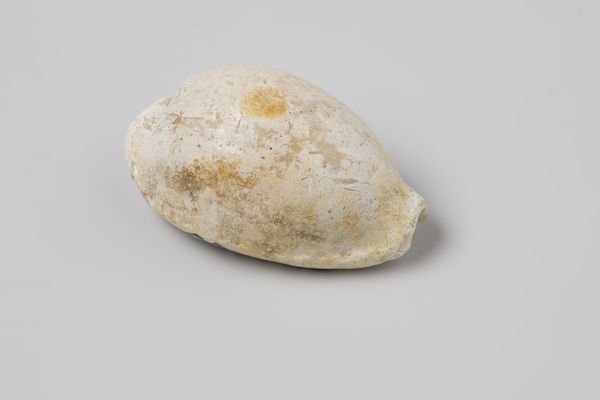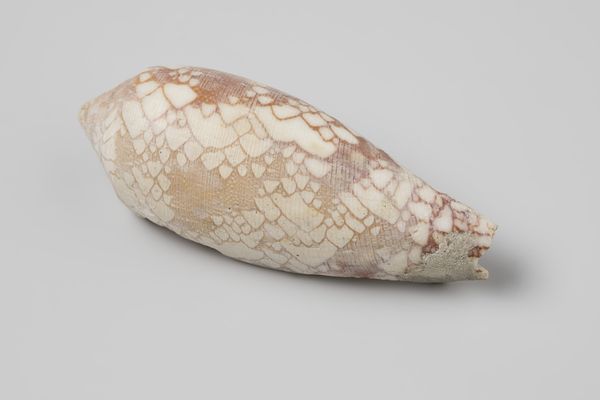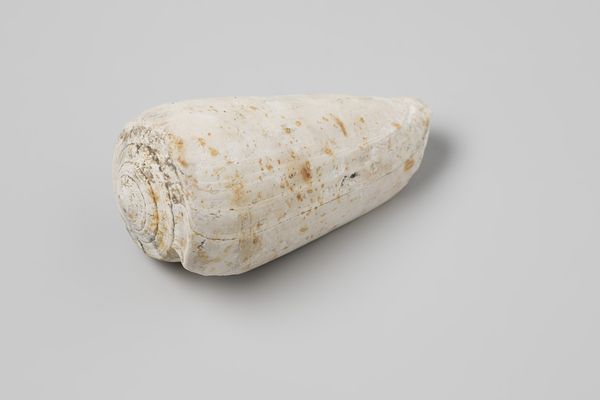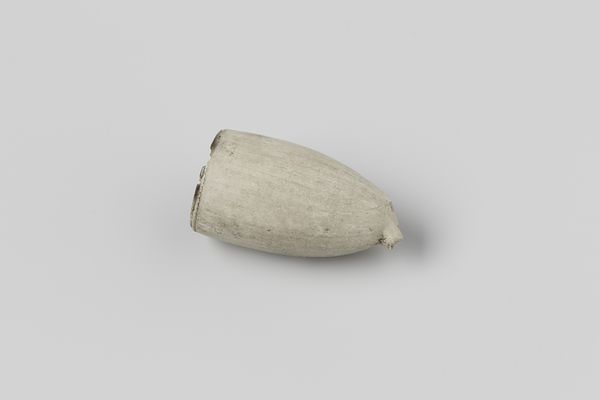
Conus ebraeus shell from the wreck of the Dutch East India ship Witte Leeuw before 1613
0:00
0:00
nietvantoepassing
Rijksmuseum
Dimensions: length 3.1 cm, width 1.8 cm, height 2.1 cm
Copyright: Rijks Museum: Open Domain
This Conus ebraeus shell comes from the wreck of the Dutch East India ship Witte Leeuw. The shell features a striking pattern of dark squares against a light background, reminiscent of ancient mosaic work. This grid motif, echoing checkerboards and other patterns, has appeared across cultures throughout history as a symbol of duality and balance. We see it echoed in Roman floor tiles, Renaissance paintings, and even modern-day fashion. But more than just geometric patterns, the shell itself has a powerful symbolism, representing birth, regeneration, and transformation in many cultures. The spiral form of the shell mirrors the cycles of life, death, and rebirth, engaging us on a subconscious level with the eternal rhythms of nature. This connection to the ocean depths evokes a primal sense of wonder and the unknown, a powerful force resonating with our deepest fears and longings. The grid pattern and spiral form of the shell echo the cyclical progression of symbols, reappearing throughout history and evolving with each new context.
Comments
No comments
Be the first to comment and join the conversation on the ultimate creative platform.

